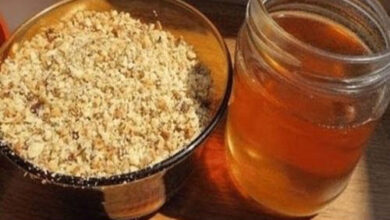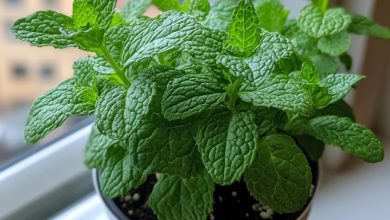How to Keep Strawberries Fresh Longer: 7 Expert Tips to Prevent Mold and Spoilage

Strawberries, those vibrant, ruby-red jewels of the fruit world, are truly one of nature’s sweetest gifts. Their delightful flavor and juicy texture make them a favorite for snacking, desserts, and culinary creations. However, their notoriously delicate nature means they can spoil surprisingly quickly if not handled and stored with proper care. Many of us have experienced the disappointment of reaching for a carton of fresh strawberries only to find them marred by unsightly mold, an unappealing softness, or even discoloration, often within mere days of bringing them home. The good news is that with a few simple, expert-backed strategies, you can significantly extend the lifespan of your strawberries, ensuring you enjoy their peak freshness for much longer.
ADVERTISEMENT
Understanding Why Strawberries Spoil So Quickly
To effectively combat spoilage, it’s helpful to understand the underlying reasons behind a strawberry’s rapid decline. Strawberries are inherently perishable due to a combination of factors, primarily their thin skins and exceptionally high water content. These characteristics make them highly susceptible to environmental factors that accelerate decay. Exposure to excess moisture, overly warm temperatures, or simply improper storage methods creates an ideal breeding ground for mold growth and general deterioration. By proactively addressing these vulnerabilities through smart storage techniques, you can dramatically slow down the spoiling process, thereby preserving their exquisite flavor and desirable texture for an extended period.
ADVERTISEMENT
Seven Expert-Approved Strategies to Keep Strawberries Fresh Longer
Implementing these practical tips will help you maximize the freshness of your strawberries and minimize waste.
ADVERTISEMENT
- Avoid Washing Until Ready to Eat: A Golden Rule for Freshness Moisture is unequivocally mold’s best friend. Introducing excess water to strawberries before storing them creates the perfect damp environment for mold spores to multiply rapidly. Therefore, the cardinal rule is: “Store them dry.” Instead of pre-washing, gently rinse your strawberries under cool, running water only just before you plan to eat them or incorporate them into your recipes. This simple step prevents premature spoilage.
- Immediate Action: Remove Moldy Berries Promptly Mold is an unwelcome guest that spreads with alarming speed from one berry to another. To safeguard your entire batch from contamination, it’s crucial to be vigilant. As soon as you bring your strawberries home, take a moment to “Inspect the batch as soon as you bring it home.” Any strawberries showing signs of mold or that feel overly soft should be “Discard[ed] any moldy or overly soft strawberries right away.” This immediate removal can save the rest of your precious berries.
- Harness the Power of Vinegar Soaks for Extended Freshness A quick and effective vinegar soak can work wonders by helping to eliminate bacteria and mold spores present on the fruit’s surface, all without imparting any noticeable vinegar taste to your strawberries. To perform this preservation technique: “Mix 1 part white vinegar with 8 parts water in a large bowl.” Gently “Submerge the strawberries for 1–2 minutes, then rinse thoroughly with cold water.” The rinsing step is vital to remove any residual vinegar. Finally, and perhaps most importantly, “Pat them completely dry with paper towels or a clean cloth before storing.” Thorough drying is key after the soak.
- Optimal Storage: The Role of Refrigeration Refrigeration is your primary ally in slowing down the natural ripening and spoilage process of strawberries. To ensure proper cold storage: “Place unwashed strawberries in a single layer on a paper towel-lined container or ventilated basket.” It’s essential to “Avoid stacking them, as pressure can bruise the delicate fruits,” which can accelerate spoilage. For best results, “Keep them in the coldest part of your fridge (usually the crisper drawer),” where temperatures are consistently cool and stable.
- Utilize Absorbent Layers to Combat Moisture As previously emphasized, excess moisture is a direct invitation for mold to flourish. You can actively combat this by strategically incorporating absorbent barriers within your storage container. “Line the storage container with paper towels to soak up any condensation.” These paper towels will draw away any moisture that accumulates. Remember to “Replace the paper towels if they become damp during storage” to maintain a dry environment.
- Embrace Freezing for Long-Term Preservation If you find yourself with more strawberries than you can realistically consume within a few days, freezing offers an excellent and highly effective long-term preservation method. Before freezing: “Wash, hull, and pat them dry.” Once prepared, “Spread them out in a single layer on a baking sheet lined with parchment paper.” This prevents them from clumping together. “Freeze until solid, then transfer to an airtight freezer-safe bag or container.” Frozen strawberries are incredibly versatile and “work beautifully in smoothies, baked goods, and desserts,” allowing you to enjoy their flavor year-round.
- Consider Specialized Storage Solutions for Advanced Preservation For individuals who are dedicated to taking their strawberry preservation efforts to the next level, specialized storage solutions can be a worthwhile investment. You might choose to “Invest in breathable produce bags designed to regulate humidity.” These bags are engineered to create an optimal microclimate for delicate produce. “Alternatively, use glass containers with lids to maintain airflow while keeping dust out,” providing another effective option for enhanced storage.
Bonus Tip: The Advantage of Buying Local and Seasonal
Beyond storage techniques, your initial purchase choices can also impact strawberry longevity. Strawberries that have traveled long distances from farm to grocery store may already be past their peak freshness upon arrival due to handling and transit time. Whenever feasible, “Opt for locally grown, seasonal strawberries whenever possible—they’re fresher and last longer!” Supporting local growers often means you’re getting fruit that was picked recently, ensuring maximum freshness and a longer shelf life in your home.
Common Mistakes to Avoid for Fresher Berries
Understanding what not to do is just as important as knowing what to do when it comes to preserving your strawberries. Avoid these common pitfalls:
- “Storing in Airtight Containers”: While seemingly intuitive for freshness, a lack of proper ventilation actually traps moisture inside, which inevitably leads to faster spoilage and mold growth.
- “Washing Before Storing”: As discussed, moist berries create the perfect breeding ground for mold. Always ensure your strawberries are completely dry before putting them away.
- “Neglecting Inspection”: Overlooking this simple step can be costly. “Leaving even one moldy berry in the bunch can ruin the entire lot” as mold spores quickly spread to healthy fruit.




